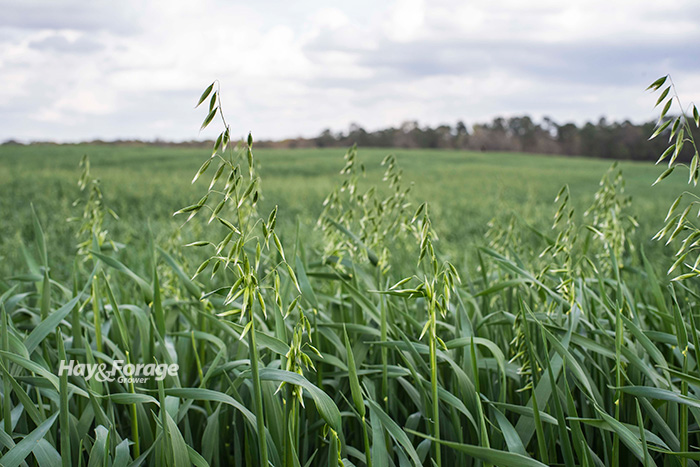
Planting small cereal grains in the spring can jumpstart the grazing season or bolster hay and silage supplies. No matter what the end goal of these cool-season species may be, now is the time to start planning spring annual forage production.
In a recent article from the University of Nebraska Extension, Jerry Volesky, a range and forage specialist, and Darren Redfearn, a forage and crop residue specialist, say small cereal grains can yield between 2.5 and 4 tons per acre. The specialists note that oats are the most common spring annual species planted in their state, but spring barley and spring triticale have been shown to have similar forage quality and yield (see tables below).


Seeding dates and rates
Plant spring annuals when soil temperatures are between 42°F and 45°F, which is typically in late March or early April. The specialists recommend seeding oats at 76 to 114 pounds per acre, spring barley at 96 to 120 pounds per acre, and spring triticale at roughly 116 pounds per acre. They also suggest buying seed that has been developed specifically for forage use.
“For these varieties, some of the characteristics might include plant height, leaf width, days to maturity, and overall forage yield and quality,” the specialists state.
Oats, spring barley, and spring triticale can also be planted together in a mixed stand. Other forage species that may benefit oats in a mixed stand are field peas and Italian ryegrass.
Field peas can fix nitrogen in the soil and boost overall forage quality. For example, a field trial in North Platte, Neb., showed a mix of oats and field peas had approximately 14% crude protein, whereas oats that were grown alone had 8% crude protein.
Planting Italian ryegrass with oats may be especially advantageous for grazing purposes. The specialists say this species has good regrowth that could prolong spring grazing into the summer. They recommend seeding 60 to 80 pounds of oats with 15 to 20 pounds of Italian ryegrass.
Before planting, consider previous herbicide use in the field. Some products may have a long-lasting residual that can negatively affect spring annual seedling establishment. Moreover, test soil to determine fertilization rates for forage.
“With spring-planted small grain cereals, nitrogen is usually the limiting nutrient,” the specialists state. “For irrigated fields, 50 to 70 pounds of nitrogen per acre can be applied at planting or within the first month. For dryland fields, nitrogen rates can be similar if there is adequate precipitation.”
Harvest timing
Start grazing spring annuals when plants are 6 to 8 inches tall, which typically occurs in the third or fourth week of May. Then aim to keep plants 6 to 12 inches tall with strategic grazing management.
“This might require an initial lighter stocking rate — about one cow-calf pair for every two acres. Then adjust animal numbers upward as oat growth changes,” the specialists explain. “In general, a good stand of cereal small grains could support up to two cow-calf pairs per acre for about a six-week period.”
Harvest timing for hay depends on desired forage quality and yield. Small cereal grains that are cut in the late-boot stage may have 12% to 14% crude protein but yields will be lower. Harvesting these crops in the milk or soft dough stage will promise higher yields but crude protein levels could drop to 7% to 10%.
If forage is chopped for silage, ensure plants are between 40% to 60% moisture before ensiling. Small cereal grains that are harvested from boot stage to soft-dough stage will need at least 24 hours to reach this range.
“Forages should not be ensiled with more than 70% moisture due to potential seepage losses and growth of detrimental bacteria, which can result in an undesirable fermentation,” the specialists conclude.

Amber Friedrichsen served as the 2021 and 2022 Hay & Forage Grower summer editorial intern. She currently attends Iowa State University where she is majoring in agricultural communications and agronomy.

